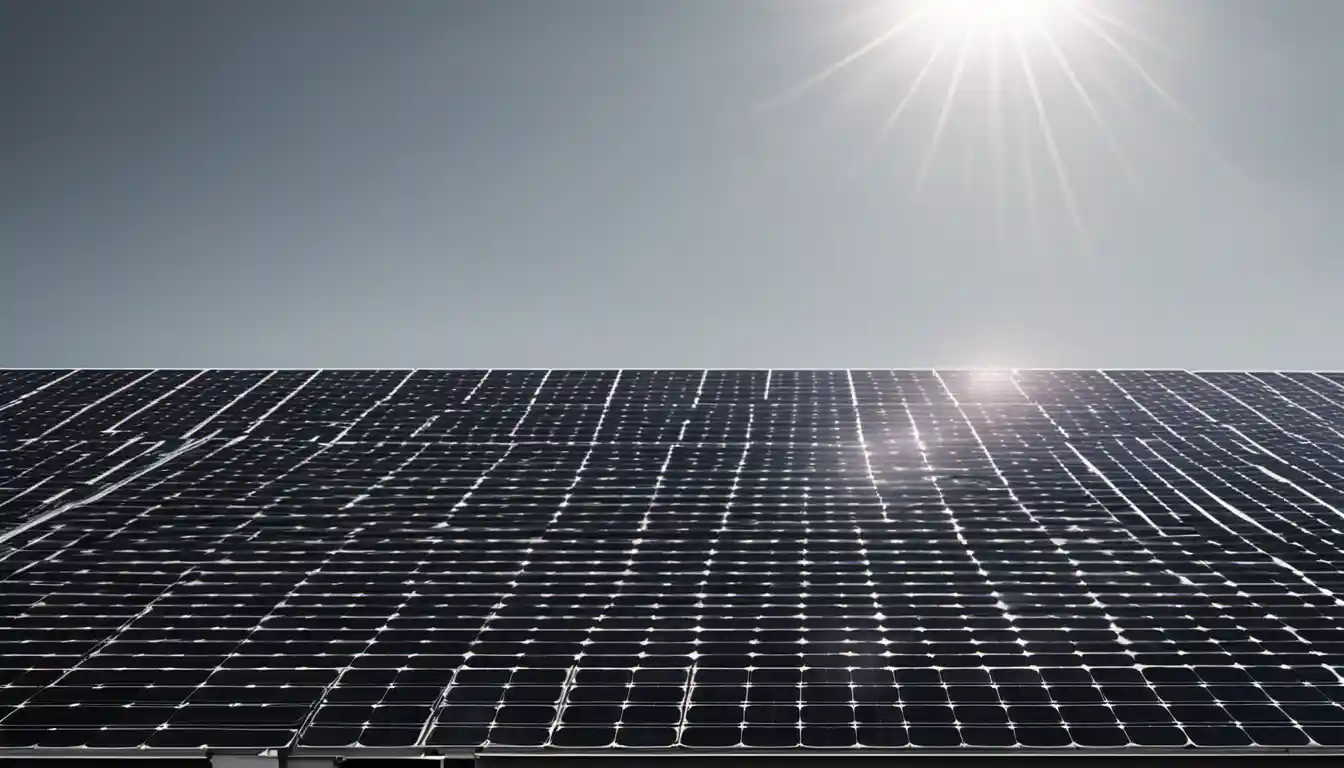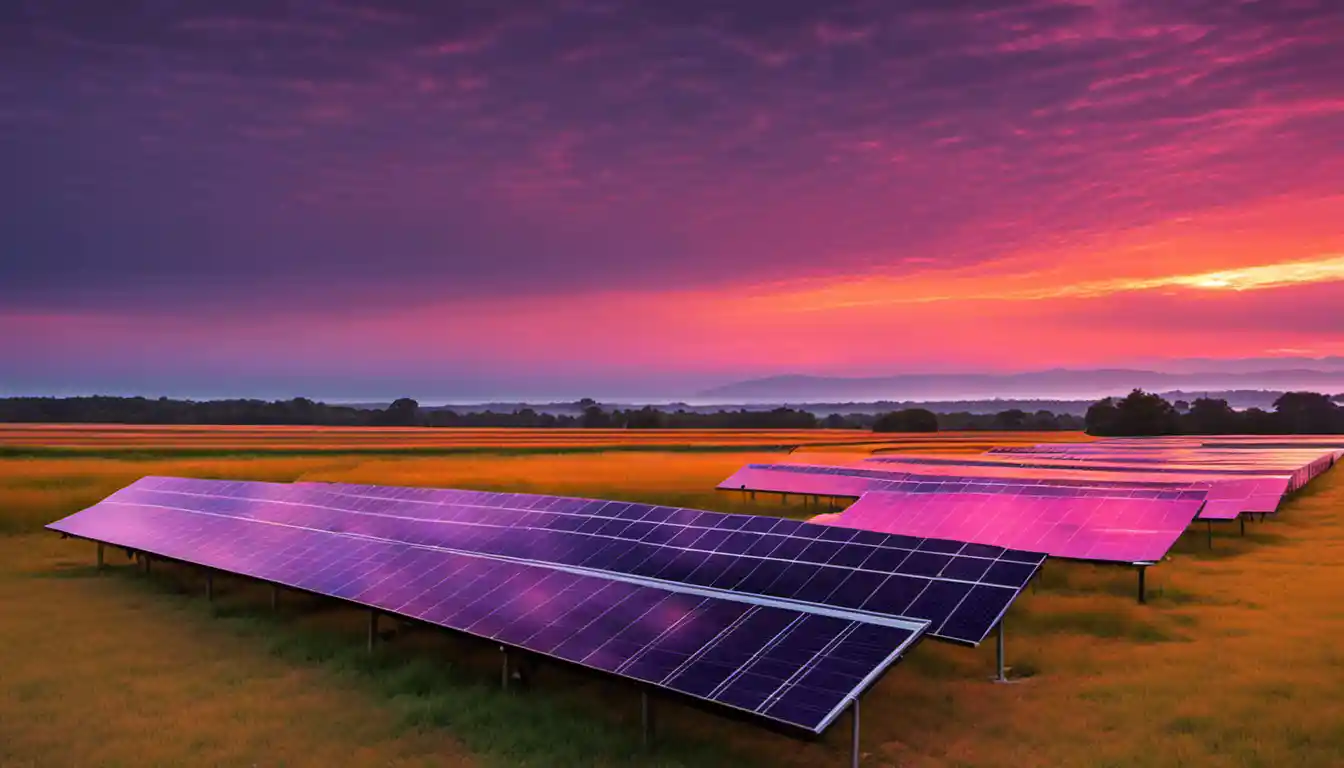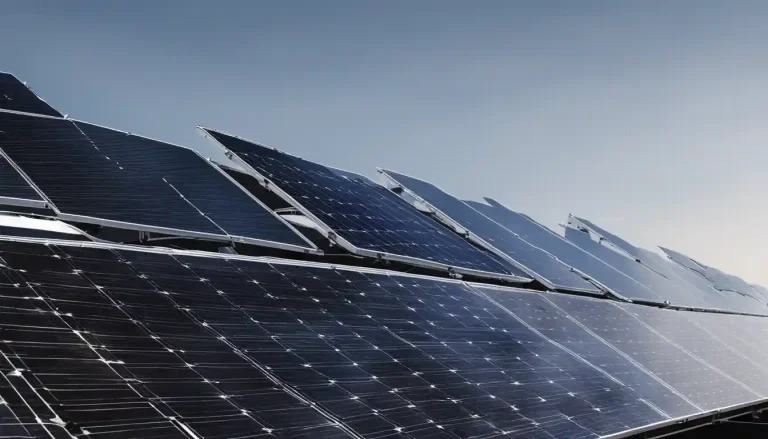Introduction to Monocrystalline and Polycrystalline Solar Panels
Monocrystalline solar panels are made from a single crystal structure, which allows electrons greater freedom of movement and therefore they tend to be more efficient. Polycrystalline solar panels, made with different crystal structures fused together, are less efficient but are more affordable.
Understanding Monocrystalline Solar Panels
Monocrystalline solar panels are like the meticulous professional, always striving for peak performance. They are made from a single, pure silicon crystal. The uniformity of the crystal structure gives them their trademark all-black look, a product of how light interacts with the pure silicon.
The name ‘monocrystalline’ comes from the single, large silicon crystal used to manufacture each panel, a feature that inherently boosts the efficiency of these panels by reducing the restrictions on the movement of electrons that generate electricity.
Insight into Polycrystalline Solar Panels
Polycrystalline solar panels, on the other hand, are like a team of diverse individuals working together. They are made by melting multiple silicon fragments together to form the wafers. This process forms a panel that has a distinctive blue or purple hue and a somewhat less uniform appearance than their monocrystalline counterparts due to many different crystals in each cell. However, this unique manufacturing process means they are more affordable.
Key Differences between Monocrystalline and Polycrystalline Solar Panels
The Makeup: Single vs Multiple Silicon Crystals
The fundamental difference between monocrystalline and polycrystalline solar panels lies in their silicon crystal composition. A monocrystalline panel consists of a singular, pure crystal lattice while a polycrystalline panel is formed from multiple crystal structures fused together – a characteristic that gives each their typical color scheme.
Visual Differences: Black vs Blue Cells
Though it may seem a superficial point, the color of solar panels can affect homeowner decisions. Monocrystalline solar panels, with their elegant black cells, often blend better aesthetically with darker rooftops. In contrast, the blue cells of polycrystalline solar panels offer a visual distinctive, and arguably striking look, particularly when positioned against a contrasting background.
Efficiency: Comparative Analysis

When it comes to the question of efficiency, monocrystalline solar panels have the upper hand. They typically convert over 20% of solar light into electricity. Please note, this efficiency difference isn’t huge, yet, it can play a significant role especially if space is extremely constrained.
Cost Considerations: Monocrystalline vs Polycrystalline Solar Panels
Initial Purchase and Installation Costs
Monocrystalline solar panels tend to be more cost-prohibitive upfront due to their complicated manufacturing process. However, they could potentially save you more on electricity costs over the long run due to their higher efficiency. Polycrystalline panels, on the other hand, win on upfront affordability.
Long-Term Energy Production Cost
When considering long-term costs, it’s a tight race between monocrystalline and polycrystalline solar panels. While the latter may be less efficient, their lower upfront cost may allow for the installation of additional panels, offsetting the energy production difference.
Evaluating the Efficiency and Temperature Coefficient of Monocrystalline and Polycrystalline Solar Panels
Energy Efficiency: A Comparative Overview
Monocrystalline panels generally have an efficiency rating of 15-20%, while polycrystalline panels linger in the range of 13-16%. However, given equal sunlight conditions, you’d need a slightly larger area for polycrystalline panels to match the power output of their monocrystalline counterparts.
Temperature Coefficient: How Heat Affects Functionality
Solar panels, interestingly, aren’t friends with extreme heat, despite depending on the sun. Hotter temperatures can reduce their power output. Both mono and polycrystalline panels suffer from this, but most modern panels are equipped with advanced heat tolerance capabilities, minimizing the impact.
Aesthetics and Lifespan: Which one outshines the other?

Appearance: A Matter of Personal Taste
Aesthetics is subjective. Some may prefer the uniform black of monocrystalline cells while others might enjoy the unique shades of blue in polycrystalline panels. Solar panels are a significant home addition, and their visual impact should suit your taste.
Durability: Which Panels Last Longer?
When it comes to durability, both mono and poly panels offer similar lifespans. Most come with warranties ensuring a 25-30 year productive life, making solar panels a robust long-term investment.
Choosing the Best One: Factors to consider for Monocrystalline and Polycrystalline Solar Panels
Evaluating Based on Specific Color Preferences
The choice between mono and poly panels might boil down to color preference. Black or blue – what suits your roof better?
Considerations for Space Constraints
If space is at a premium, monocrystalline panels with their higher efficiency might be the smarter choice to maximize the potential of your available space.
Financial Factors: Budget and Financing Options
A crucial part of your decision will inevitably be defined by your budget. While monocrystalline panels offer more efficiency, their higher cost might be prohibitive. Polycrystalline panels offer a more budget-friendly entrance to solar energy.
FAQs about Monocrystalline and Polycrystalline Solar Panels

The world of solar energy can be intricate, so let’s address some common questions.
Which solar panel type is superior: Monocrystalline or Polycrystalline?
Neither is inherently superior; it depends on your specific needs and constraints. Both have their merits and drawbacks.
Is Monocrystalline more costly than Polycrystalline?
Yes, monocrystalline panels generally cost more upfront than polycrystalline panels due to their manufacturing process.
What differentiates Polycrystalline and Monocrystalline solar panels?
The main difference lies in their silicon crystal structure and manufacturing process, which influences their efficiency, color, and cost.
What is the price disparity between Monocrystalline and Polycrystalline solar panels?
The price difference can be from 10% to 20%, with monocrystalline being more expensive. However, the price can vary with brands, system size, and other factors.
Looking Beyond Monocrystalline and Polycrystalline: Other Types of Solar Panels
While the discussion here has focused on monocrystalline and polycrystalline solar panels, it’s worth mentioning that the solar world doesn’t end there. Thin-film solar panels and even solar roofs are novel players in this arena. If your curiosity is piqued, learn more about the different types of solar panels on our dedicated page.
Conclusion: Choosing the Right Solar Panels for Your Needs
Understandably, the decision between monocrystalline vs polycrystalline solar panels can be arduous. But remember, the best solar panel for you is one that suits your unique situation and preferences. From color to efficiency, cost to space restrictions, a panel that checks most – if not all boxes – will be the right choice.
By now, you should be well equipped with expert knowledge on the significant differences between monocrystalline and polycrystalline solar panels. But the solar energy journey doesn’t stop here. Here’s to a brighter, greener, and more sustainable world of energy. Good luck on your solar voyage!



